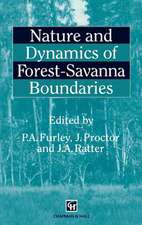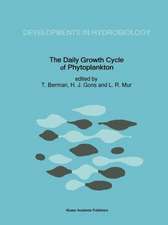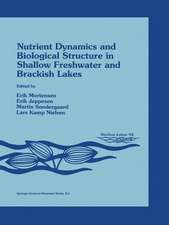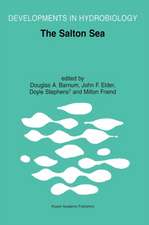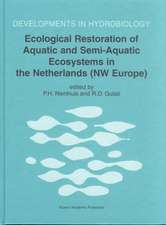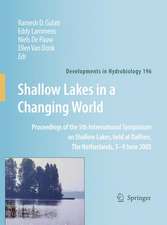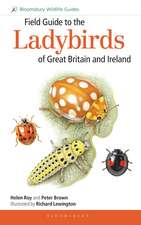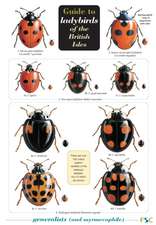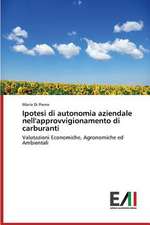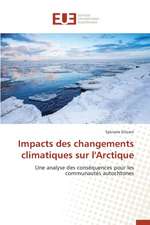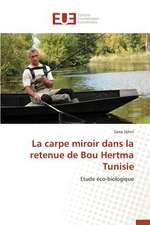Invasive Alien Arthropod Predators and Parasitoids: An Ecological Approach: Progress in Biological Control, cartea 13
Editat de Helen Roy, Patrick De Clercq, Lori-Jayne Lawson Handley, John J. Sloggett, Remy L. Poland, Eric Wajnbergen Limba Engleză Paperback – 29 noi 2013
| Toate formatele și edițiile | Preț | Express |
|---|---|---|
| Paperback (1) | 956.33 lei 6-8 săpt. | |
| SPRINGER NETHERLANDS – 29 noi 2013 | 956.33 lei 6-8 săpt. | |
| Hardback (1) | 810.45 lei 38-44 zile | |
| SPRINGER NETHERLANDS – 27 oct 2011 | 810.45 lei 38-44 zile |
Din seria Progress in Biological Control
- 18%
 Preț: 952.57 lei
Preț: 952.57 lei - 18%
 Preț: 1222.01 lei
Preț: 1222.01 lei - 18%
 Preț: 1381.58 lei
Preț: 1381.58 lei - 18%
 Preț: 955.25 lei
Preț: 955.25 lei - 15%
 Preț: 632.19 lei
Preț: 632.19 lei - 24%
 Preț: 1054.21 lei
Preț: 1054.21 lei - 15%
 Preț: 657.25 lei
Preț: 657.25 lei - 15%
 Preț: 649.06 lei
Preț: 649.06 lei - 18%
 Preț: 1412.20 lei
Preț: 1412.20 lei - 18%
 Preț: 942.76 lei
Preț: 942.76 lei - 24%
 Preț: 797.37 lei
Preț: 797.37 lei - 18%
 Preț: 1117.03 lei
Preț: 1117.03 lei - 18%
 Preț: 948.16 lei
Preț: 948.16 lei - 15%
 Preț: 652.17 lei
Preț: 652.17 lei - 15%
 Preț: 653.14 lei
Preț: 653.14 lei - 18%
 Preț: 956.81 lei
Preț: 956.81 lei - 18%
 Preț: 1234.77 lei
Preț: 1234.77 lei - 18%
 Preț: 936.29 lei
Preț: 936.29 lei - 18%
 Preț: 1225.94 lei
Preț: 1225.94 lei
Preț: 956.33 lei
Preț vechi: 1166.26 lei
-18% Nou
Puncte Express: 1434
Preț estimativ în valută:
183.01€ • 189.91$ • 152.97£
183.01€ • 189.91$ • 152.97£
Carte tipărită la comandă
Livrare economică 18 martie-01 aprilie
Preluare comenzi: 021 569.72.76
Specificații
ISBN-13: 9789400738294
ISBN-10: 9400738293
Pagini: 332
Ilustrații: VIII, 324 p.
Dimensiuni: 210 x 279 x 17 mm
Greutate: 0.76 kg
Ediția:2012
Editura: SPRINGER NETHERLANDS
Colecția Springer
Seria Progress in Biological Control
Locul publicării:Dordrecht, Netherlands
ISBN-10: 9400738293
Pagini: 332
Ilustrații: VIII, 324 p.
Dimensiuni: 210 x 279 x 17 mm
Greutate: 0.76 kg
Ediția:2012
Editura: SPRINGER NETHERLANDS
Colecția Springer
Seria Progress in Biological Control
Locul publicării:Dordrecht, Netherlands
Public țintă
ResearchCuprins
Foreword: Alien arthropod predators and parasitoids: an ecological approach.- 1. A conceptual framework for understanding arthropod predator and parasitoid invasions.- 2. Alien arthropod predators and parasitoids: interactions with the environment.- 3. Ecological genetics of invasive alien species.- 4. Detecting arthropod intraguild predation in the field.- 5. A ‘Goldilocks’ hypothesis for dispersal of biological control agents.- 6. Can the enemy release hypothesis explain the success of invasive alien predators and parasitoids?.- 7. Ecological effects of invasive alien species on native communities, with particular emphasis on the interactions between aphids and ladybirds.- 8. Inventory of terrestrial alien arthropod predators and parasites established in Europe.- 9. Ecological effects and management of invasive alien Vespidae.- 10. Torymus sinensis: a viable management option for the biological control of Dryocosmus kuriphilus in Europe?.- 11. Ecology of Arachnida alien to Europe.- 12. The hitchhiker’s guide to alien ant invasions.- 13. Invasive alien Crustacea: dispersal, establishment, impact and control.- 14. Invasions by ladybugs, ladybirds, and other predatory beetles.- 15. Ecology of Harmonia axyridis in natural habitats within its native range.- 16. The global spread of Harmonia axyridis (Coleoptera: Coccinellidae): distribution, dispersal and routes of invasion.- 17. The chemical ecology of Harmonia axyridis.- 18. Living withthe enemy: parasites and pathogens of the ladybird Harmonia axyridis.- 19. Benefi ts and risks of exotic biological control agents.
Recenzii
From the reviews:
“This hardcover volume comprises a foreword plus 19 review articles on the ecology of alien arthropod predators and parasitoids. … This book covers its topic in a broad and multifaceted way and some chapters have the potential to become baseline reviews of their respective area. … Overall, the book can be well recommended and appears particularly suited for scientists from related areas to gain a timely overview of the subject.” (Martin H. Entling, Basic and Applied Ecology, Vol. 13 (8), December, 2012)
“This hardcover volume comprises a foreword plus 19 review articles on the ecology of alien arthropod predators and parasitoids. … This book covers its topic in a broad and multifaceted way and some chapters have the potential to become baseline reviews of their respective area. … Overall, the book can be well recommended and appears particularly suited for scientists from related areas to gain a timely overview of the subject.” (Martin H. Entling, Basic and Applied Ecology, Vol. 13 (8), December, 2012)
Textul de pe ultima copertă
Invasive alien species (IAS) coupled with climate change have been referred to as a "deadly duo". Until recently research on invasion biology has centred mainly on alien plants and vertebrates, despite the numerical dominance of invasive alien arthropods. Arthropods are the largest group of IAS worldwide. However, many alien arthropods are not invasive and play a beneficial role, particularly in controlling insect and mite pests. Indeed, more than 1500 terrestrial arthropod species have been identified as alien to Europe but only a fraction has been shown to cause either an ecological or economical impact, yet knowledge is severely limited by a paucity of data. The IOBC / WPRS Working Group "Benefits and Risks of Exotic Biological Control Agents" developed the theme of this book to begin to address the limitations in understanding of this important research area. Understanding invasion biology, and the dynamics of biological control practices, requires a multidisciplinary and unified approach, embracing and integrating all the research tools at our disposal, particularly modern molecular and modelling techniques. This book represents a timely synthesis of current ecological knowledge and research on alien arthropod predators and parasitoids.
Caracteristici
Timely synthesis of current ecological knowledge and research on alien arthropod predators and parasitoids which is a neglected field Contributions from researchers around the world gives a global perspective Broad conceptual chapters coupled with more specific taxon-related chapters provide a thorough overview of the state of current knowledge and considerations for future work


